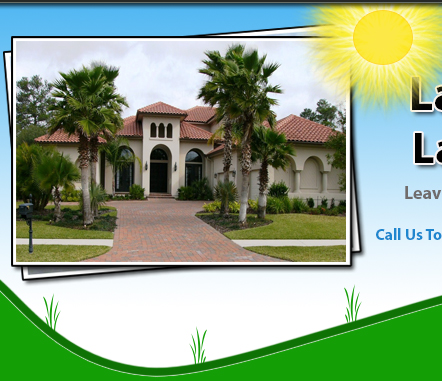|
|
TURF GRASSESWe offer the following types of Turf Grasses (Click on the links below for more info): · Tiff 419 Bermuda IMPORTANT INFOHow to figure how many pallets are required for your install/project: 1. Measure the width of the area x length of the area in feet. 2. Then divide that number by 450. That will convert the area into the number of pallets required. Example: An area that measures 25' in length and 18' in width. Formula: All Grasses are available for full install or delivery only. Prices are subject to change. Prices are for full pallets only, call for estimates on installation! FAQ'S on TURF GRASSESWe come directly from the grass farm, so there is no middle man to deal with. We own all of our own trucks, trailers and forklifts so we can deliver or install the freshest grass possible. St. Augustine Grass, Bermuda, Zoysia 1. How long do I water new grass? Water at least 2.5 - 3 weeks daily, preferably in the morning hours for a time period of 30-45 min. In hotter months you may need to water 2 times a day and for longer periods of time. Keeping the new grass moist is the key for growth. This depends on shade or sun conditions. 2. When do I mow my lawn? Do not mow lawn for the first 3 weeks after a new install, to allow the grass to concentrate on root development. 3. How short/tall do I mow grasses? First cut after install set the mower to the highest level. From then on, a recommended height for St. Augustine grass is 3”. 2" - 2.5" recommended height for Bermuda and Zoysia's 4. Do I mulch or bag grass clippings? Last 2 mowings of the season (late November-December) you should bag or rake up clippings. First mowing of the season (February/March) you should do the same. This helps with de-thatching your lawn and letting it breath. The next mowing you can mulch the clippings. 5. What about fertilizer? When do I use it and what type do I use? Early spring and summer use a high nitrogen based fertilizer such as a “Turf Builder” or “Bonus S” by Scott’s Brand. Early fall use a General fertilizer recommended for all lawns. Late fall to early winter use a “Winterizer” type fertilizer. The word “Winterizer” will be marked on the front package. ***Make sure to look at package label to see the types of lawns fertilizer is made for.*** 6. Is there any warranty or guarantee on the grass? Unfortunately there is no warranty or guarantee on the grass. We cut grass everyday of the business week to provide the freshest grass to the market. Since we cannot control how the grass will be maintained, no one in the industry can provide any warranty. 7. What do I do if grass starts to discolor? Some pieces of grass will remain green while others will discolor. This is a result of those pieces going into “Shock”. They are getting used to their new environment. It is common for grass to do this. It does take approximately two months for St. Augustine to develop a decent root system (a little longer for the others) and for the grass to grow together. Much longer if installed towards the end of the growing season. Please be patient with Mother Nature! 8. How about watering after the initial 2-3 weeks? A good rule of thumb is to give your lawn at least 1-1 1/2 inches of water per week. Although this is a general statement, you may want to water a little more in areas of direct full sun and less in shady areas. You may want to water 1x per week in the Fall and 2x-3x in the Summer. Longer watering times and fewer intervals help the St. Augustine. This is just a general statement. You would be the one to determine if lawn needs more or less watering. St. Augustine grasses are similar to identical in texture, the root system is what distinguishes them from others. St. Augustine is susceptible to fungus and brown patch vs. seed producing grass such as Bermuda and Zoysia. Watering at night and over watering is a main reason for this fungus. Bermudas and Zoysia grasses are becoming more and more poular with builders and homeowners due to the lower maintenance (watering and mowing), higher heat tolerance due to a better root sysem, and better foot traffic on the lawn. Feel free to contact us with specific questions. |



